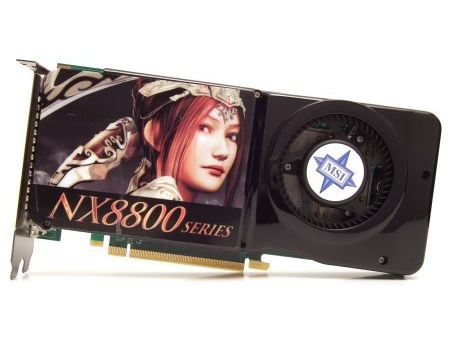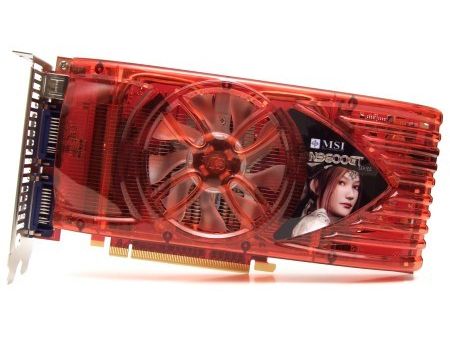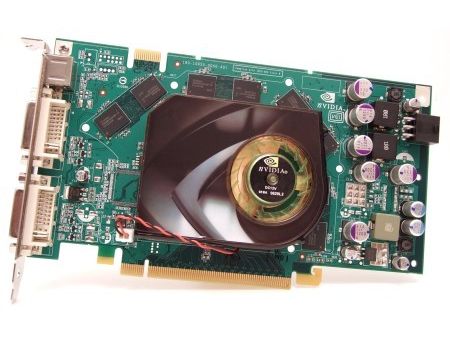GPU vs. CPU Upgrade: Extensive Tests
CPU Power for the Graphics Cards
In this comparison, you can see the increase in the overall 3D performance as the CPU performance increasesThe E2160 at 1800MHz sets the reference point for percentage increases: A rating of 120% for example is only 20% faster than this reference point. The percentage value is calculated using the overall result achieved in the benchmark suite at all tested resolutions, by a combination of graphics card and CPU.
| Performance increase of 9800 GTX by means of CPU | Percent |
|---|---|
| Geforce 9800 GTX (512 MB) E2160@1.8 | 100.0 |
| Geforce 9800 GTX (512 MB) E2160@2.41 | 120.1 |
| Geforce 9800 GTX (512 MB) E6750@2.67 | 137.9 |
| Geforce 9800 GTX (512 MB) Q6600@2.4 | 132.8 |
| Geforce 9800 GTX (512 MB) Q6600@3.2 | 143.0 |
| Geforce 9800 GTX (512 MB) X6800EE@2.94 | 139.0 |
The Geforce 9800 GTX responds very well to the clocking speed and performance class of the CPU. Overclocking the FSB by 33% on the E2160 results in 20% more performance overall for the Geforce 9800 GTX. There is only a difference of 2% to 7% among the E6750, the Q6600 standard rate and the X6800EE.
| Performance increase of 8800 GTS 512 OC by means of CPU | Percent |
|---|---|
| Geforce 8800 GTS OC (512 MB) E2160@1.8 | 100.0 |
| Geforce 8800 GTS OC (512 MB) E2160@2.41 | 120.7 |
| Geforce 8800 GTS OC (512 MB) E6750@2.67 | 140.5 |
| Geforce 8800 GTS OC (512 MB) Q6600@2.4 | 135.4 |
| Geforce 8800 GTS OC (512 MB) Q6600@3.2 | 145.6 |
| Geforce 8800 GTS OC (512 MB) X6800EE@2.94 | 142.6 |
The Geforce 8800 GTS OC responds even better to the CPU performance, thanks to the higher clocking rates for shader and GPU. A weaker and lower clocked CPU wastes at least 35% of overall 3D performance with the G92 graphics chip.
| Performance increase of 8800 GT OC by means of CPU | Percent |
|---|---|
| Geforce 8800 GT OC (512 MB) E2160@1.8 | 100.0 |
| Geforce 8800 GT OC (512 MB) E2160@2.41 | 116.5 |
| Geforce 8800 GT OC (512 MB) E6750@2.67 | 137.2 |
| Geforce 8800 GT OC (512 MB) Q6600@2.4 | 132.3 |
| Geforce 8800 GT OC (512 MB) Q6600@3.2 | 140.6 |
| Geforce 8800 GT OC (512 MB) X6800EE@2.94 | 138.2 |
A Geforce 8800 GT OC is as fast as an unclocked Geforce 8800 GTS 512. The streamlined graphics chip has only 112 stream processors instead of 128, which has an immediate effect on the maximum potential increase in performance. It is 3-5% lower than for the Geforce 8800 GTS 512 OC.
| Performance increase of 9600 GT OC 1024 by means of CPU | Percent |
|---|---|
| Geforce 9600 GT OC (1024 MB) E2160@1.8 | 100.0 |
| Geforce 9600 GT OC (1024 MB) E2160@2.41 | 116.3 |
| Geforce 9600 GT OC (1024 MB) E6750@2.67 | 133.3 |
| Geforce 9600 GT OC (1024 MB) Q6600@2.4 | 129.1 |
| Geforce 9600 GT OC (1024 MB) Q6600@3.2 | 136.5 |
| Geforce 9600 GT OC (1024 MB) X6800EE@2.94 | 134.8 |
Where the overclocked E2160 is able to obtain a 16% performance increase from the Geforce 9600 GT, the benefits sink to 3-4% for the more expensive CPUs, when the values are compared using the Geforce 8800 GT OC.
| Performance increase of 7950 GT by means of CPU | Percent |
|---|---|
| Geforce 7950 GT (512 MB) E2160@1.8 | 100.0 |
| Geforce 7950 GT (512 MB) E2160@2.41 | 107.3 |
| Geforce 7950 GT (512 MB) E6750@2.67 | 111.0 |
| Geforce 7950 GT (512 MB) Q6600@2.4 | 109.8 |
| Geforce 7950 GT (512 MB) Q6600@3.2 | 110.6 |
| Geforce 7950 GT (512 MB) X6800EE@2.94 | 111.2 |
A more powerful CPU increases the overall results of the Geforce 7950 GT by 11%. The overclocked Q6600 at 3.2 GHz loses points in this graphics card class to the E6750 at 2.67 GHz, or the X6800EE at 2.94 GHz.
| Performance increase of 6800 GT by means of CPU | Percent |
| Geforce 6800 GT (256 MB) E2160@1.8 | 100.0 |
| Geforce 6800 GT (256 MB) E2160@2.41 | 100.6 |
| Geforce 6800 GT (256 MB) E6750@2.67 | 102.1 |
| Geforce 6800 GT (256 MB) Q6600@2.4 | 96.8 |
| Geforce 6800 GT (256 MB) Q6600@3.2 | 98.1 |
| Geforce 6800 GT (256 MB) X6800EE@2.94 | 101.9 |
The Geforce 6800 GT barely profits from the better CPU; in fact, when used in conjunction with a quad core, it actually loses performance. These results arise because the Geforce 6 reaches its limits with maximum graphics quality and high test resolutions. With lower resolutions and graphics quality, the CPU is able to achieve more.
Get Tom's Hardware's best news and in-depth reviews, straight to your inbox.
Current page: CPU Power for the Graphics Cards
Prev Page Graphics Cards have More Potential Next Page 3D Performance for the CPU-
randomizer That would simply consume more time without really proving much. I think sticking with a single manufacturer is fine, because you see the generation differences of cards and the performance gains compared to geting a new processor. You will see the same thing with ATI cards. Pop in an X800 and watch it crumble in the wake of a HD3870. There is no need to inlude ATI cards for the sake of this article.Reply -
randomizer This has been a long needed article IMO. Now we can post links instead of coming up with simple explanations :DReply -
yadge I didn't realize the new gpus were actually that powerful. According to Toms charts, there is no gpu that can give me double the performance over my x1950 pro. But here, the 9600gt was getting 3 times the frames as the 7950gt(which is better than mine) on Call of Duty 4.Reply
Maybe there's something wrong with the charts. I don't know. But this makes me even more excited for when I upgrade in the near future. -
This article is biased from the beginning by using a reference graphics card from 2004 (6800GT) to a reference CPU from 2007 (E2140).Reply
Go back and use a Pentium 4 Prescott (2004) and then the basis of these percentage values on page 3 will actually mean something. -
randomizer yadgeI didn't realize the new gpus were actually that powerful. According to Toms charts, there is no gpu that can give me double the performance over my x1950 pro. But here, the 9600gt was getting 3 times the frames as the 7950gt(which is better than mine) on Call of Duty 4. Maybe there's something wrong with the charts. I don't know. But this makes me even more excited for when I upgrade in the near future.I upgraded my X1950 pro to a 9600GT. It was a fantastic upgrade.Reply -
wh3resmycar scyThis article is biased from the beginning by using a reference graphics card from 2004 (6800GT) to a reference CPU from 2007 (E2140).Reply
maybe it is. but its relevant especially with those people who are stuck with those prescotts/6800gt. this article reveals an upgrade path nonetheless -
randomizer If they had used P4s there would be o many variables in this article that there would be no direction and that would make it pointless.Reply -
JAYDEEJOHN Great article!!! It clears up many things. It finally shows proof that the best upgrade a gamer can make is a newer card. About the P4's, just take the clock rate and cut it in half, then compare (ok add 10%) hehehReply -
justjc I know randomizer thinks we would get the same results, but would it be possible to see just a small article showing if the same result is true for AMD processors and ATi graphics.Reply
Firstly we know that ATi and nVidia graphics doesn't calculate graphics in the same way, who knows perhaps an ATi card requiers more or less processorpower to work at full load, and if you look at Can you run it? for Crysis(only one I recall using) you will see the minimum needed AMD processor is slover than the minimum needed Core2, even in processor speed.
So any chance of a small, or full scale, article throwing some ATi and AMD power into the mix?





